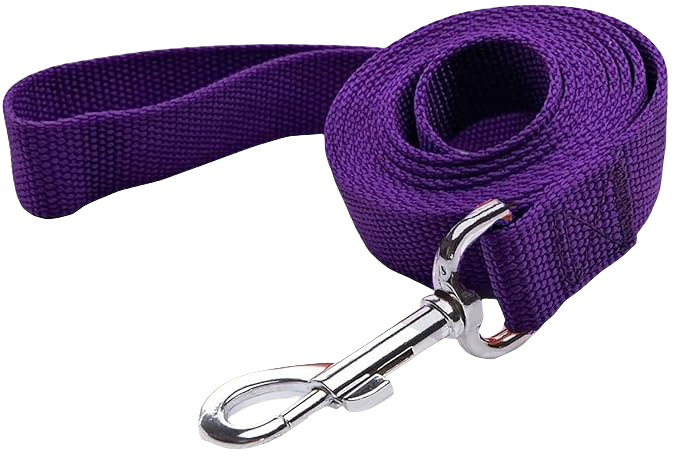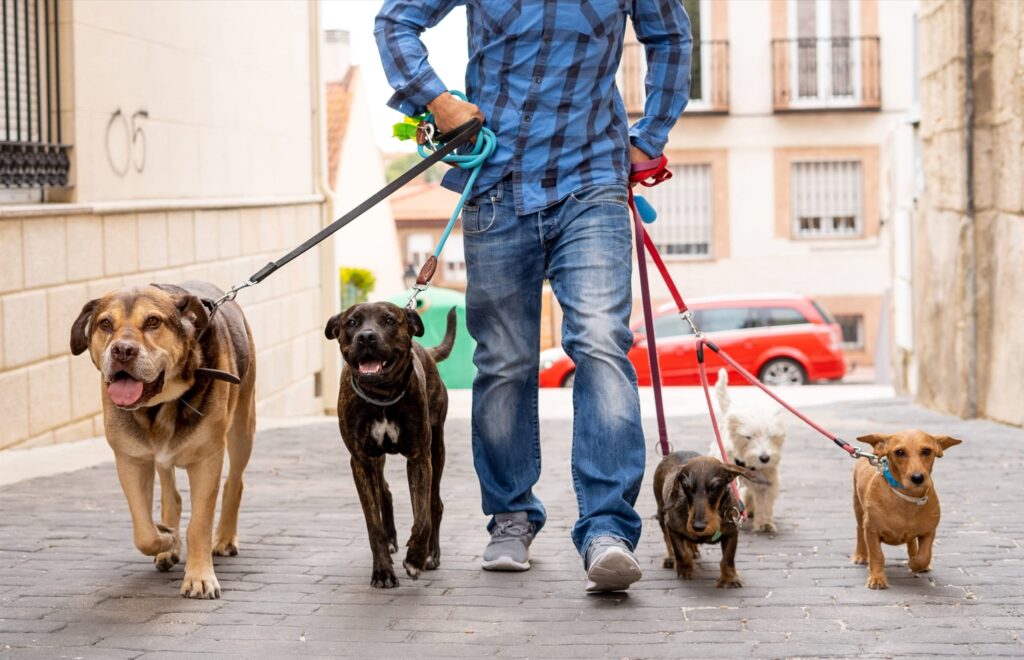
Choosing the right dog leash matters a lot. Nylon is very popular for leashes. This article shows which material is best for your dog’s leash. Keep reading to learn more!
Key Takeaways
- Nylon leashes are top picks for their strength and easy cleaning. This makes them great for wet or dirty conditions.
- Leather looks stylish and gets better with age. But, it needs regular cleaning and conditioning to keep looking good.
- Biothane leashes are durable and waterproof. But, they cost more than leashes made from other materials.
- Cotton is soft and comfy, good for docile pets. But, it may not withstand rough pulling or chewing.
- Rubber offers a strong grip, especially in wet conditions. It is suited for dogs that pull a lot during walks.
Understanding the Importance of Material Choice
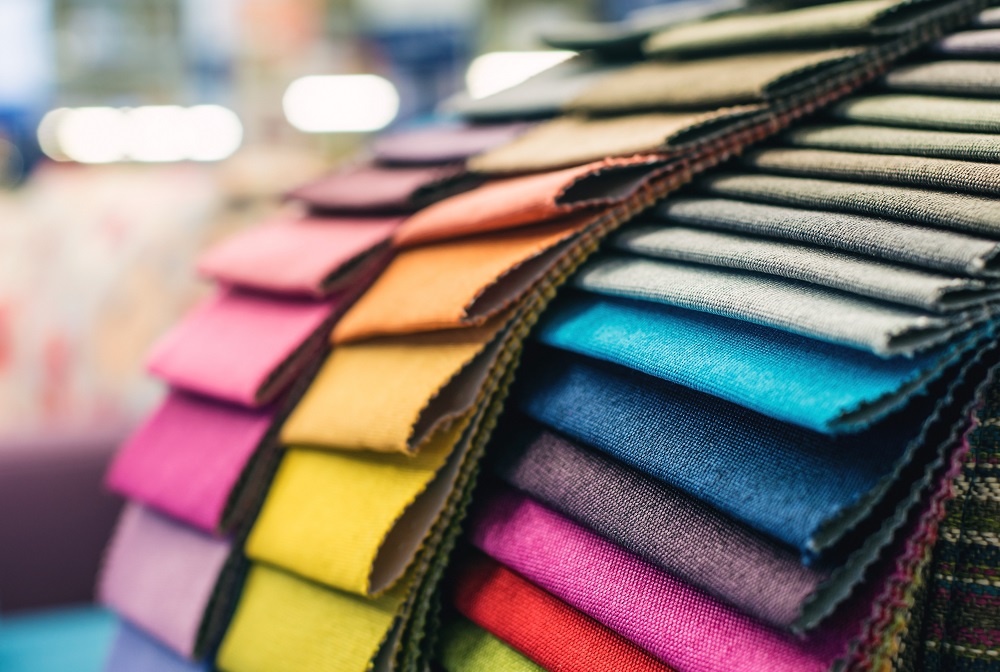
The material you pick for dog leashes really matters. Different materials like nylon, leather, and biomethane have their own strengths. For example, nylon is strong and great for wet or dirty places.
The leather looks classic but needs more care to keep it looking good. Biothane is tough and stays dry, but it might cost more.
Choosing the right leash material can help with obedience training too. A robust leash made of thick cloth keeps your dog secure during walks and training. Think about what your dogs do every day when picking a leash material.
This way, you ensure they are comfortable and secure. You also get good value for your business.
Overview of Common and Specialty Materials
You need a dog leash that can handle the challenge. It’s for a tiny bichon or a large breed that loves distance command training. Nylon leashes are at the top of the list because they’re strong and handle wet or muddy situations well.
They’re also easy to clean, which saves you time. For those who prefer a classy look and feel, leather is durable and has a nice style. But keep in mind, leather needs more care to stay in good shape.
Looking for something different? Biothane leashes might catch your eye. They are waterproof and tough. They are perfect for any adventure without worrying about damage. Cotton leashes offer versatility but remember they may not last as long if your dog is rough on their gear.
There are also rubber options. They can be great for specific uses. But, their uses are more limited than nylon or biomethane choices.
Suppose your business values eco-friendly products, DuraSoft and vegan “leather” made from synthetic materials provide durable alternatives without harming animals. These materials mimic leather’s durability while catering to clients preferring cruelty-free options.
No matter what type of dog your customers have, there’s a material that meets their needs. There are leashes for growing pups. And, there are leashes for dogs that tug hard during walks.
Comprehensive Overview of Different Leash Materials
Discover the many materials used for dog leashes. They range from sturdy synthetics to natural fibers. Explore each one to find out which fits your business needs best. Keep reading to learn more!
Nylon Leashes
Nylon leashes stand out as the top choice among dog owners and businesses alike. This material is famous for its toughness. It is perfect for any wet or dirty setting.
Nylon doesn’t hold moisture. It dries quickly and stays strong. It can handle daily use in rough conditions. For your business, offering nylon leashes means providing a product that can handle big dogs pulling hard. The leashes also suit the gentle walks of smaller breeds.
Caring for these leashes is easy, which adds to their appeal. They simply need a quick wash with soap and water; no special treatment is required. They come in various colors and designs. You can match them with different types of dog collars and accessories. These include head halters and seatbelts for dogs.
These features make nylon leashes versatile in your product lineup. They appeal to a diverse set of customers. These customers want durability without sacrificing style.
Leather Leashes
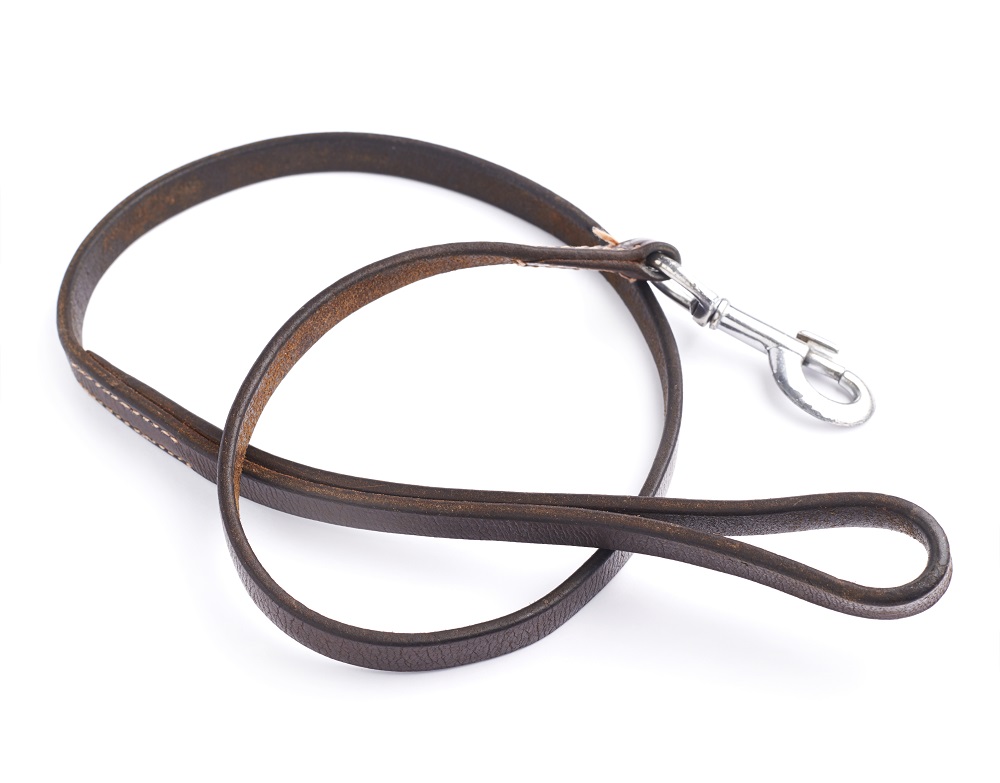
Leather leashes offer your dogs a touch of class while being strong. These leashes are good for you if you like durable products with a timeless look. They come from high-quality materials, making them last longer than many others.
You’ll find they feel soft in your hands, which is great during long walks or if your dog pulls. But, they need some care to keep them looking good. You should regularly clean and condition them to prevent drying out.
Choosing the right leash can depend on your dog’s size and how they behave on walks. Leather is great for medium to large dogs. It stands up well for pulling and wearing over time.
You run a business that sells to dog owners. Offering leather leashes gives them a stylish, strong option. Include maintenance tips for leather goods. This will help customers know how to care for their purchases.
This way, both the pet owners and their dogs will enjoy their walks even more.
Cotton Leashes
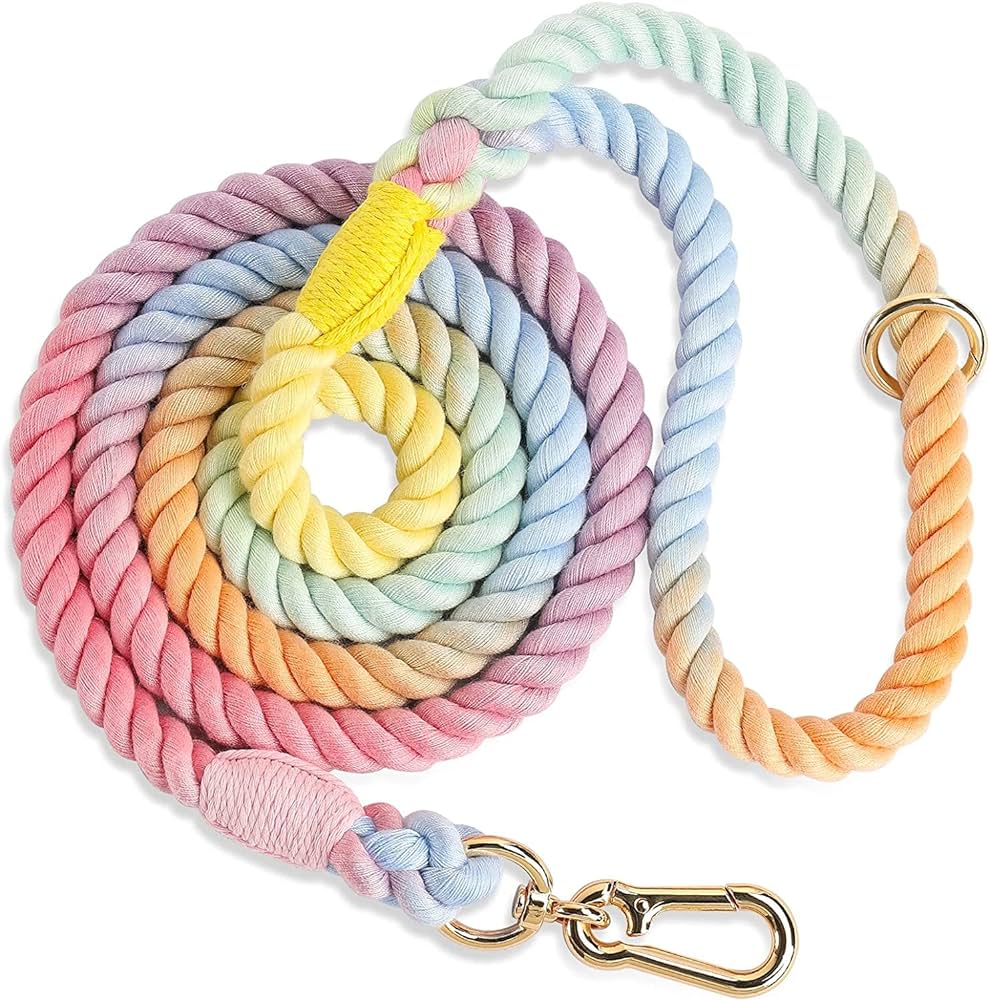
Cotton leashes offer a soft touch that is easy on your hands, making them a great choice for long walks with your dog. Cotton feels gentle. It can help prevent rope burn. That’s unlike nylon or biomethane, which are rough. This is useful if your pup likes to pull.
These leashes are also versatile. You can find them in many colors and patterns. They can match your company’s branding or customer preferences.
They’re not as durable as leather or biothane. But, they work well for dogs who don’t chew on their leash. Cotton is washable, which makes maintenance simpler. When it becomes filthy, simply put it in the washing machine.
For eco-friendly buyers, cotton leashes are a natural choice. They appeal to those who care about the environment. They give comfort during use. They are ideal for less aggressive pets, from bichons to medium-sized dogs. These pets need light to moderate control.
Biothane Leashes
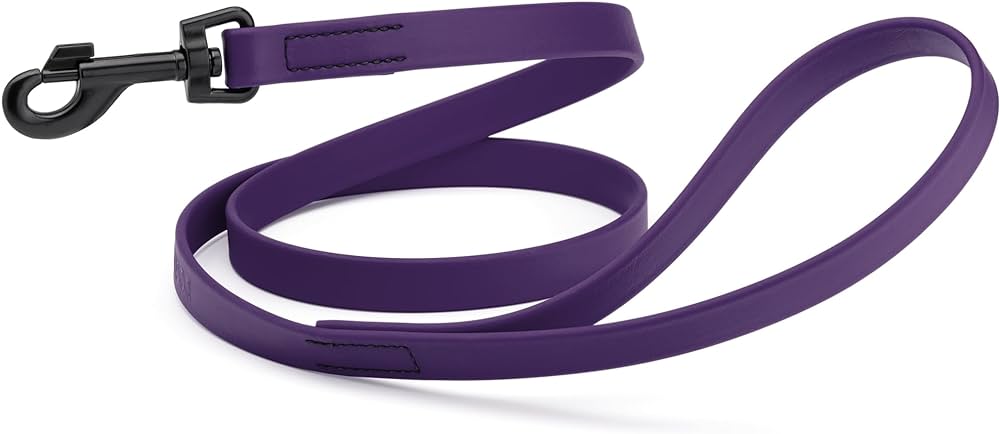
Biothane leashes stand out for being waterproof and very strong. They are great if you need a leash that lasts a long time and can handle water without getting ruined. These leashes are a bit pricier, but their durability makes them worth the extra cost.
You’ll find them useful in any season. It could be raining or snowing. They don’t absorb moisture like other materials.
For those who care about maintenance, Biothane is low-hassle.You may clean it with only soap and water. This keeps your long leashes looking new and takes little effort. This feature makes it ideal for dogs who love to play in the mud or swim during walks.
Also, these leashes come in many colors and styles. They offer both function and fashion for your dog products.
Rubber and Other Materials
Rubber leashes offer unique benefits for specific needs. They are best for dogs that pull a lot or during training sessions. The grip on rubber leashes is strong, making it easier to hold onto your dog even in wet conditions.
For slip collars and retractable leashes, rubber adds durability and control. These materials work well in environments that challenge other leash types.
Other innovative materials include DuraSoft Imitation leather and vegan “leather.” These options cater to those preferring cruelty-free products without sacrificing quality or style.
DuraSoft mimics real leather’s look and feel but is more animal-friendly. Vegan “leather” is similar. It combines a synthetic coating with woven fabric. This mix gives it flexibility and strength. Both options need simple maintenance routines. They are like caring for traditional leashes. But, they align with ethical standards.
Pros and Cons of Each Material
Every dog leash material has its good and bad points. Nylon is strong but can be rough on hands. Leather looks great but needs care to stay that way. Cotton is comfy but might not last long.
Biothane stands up to water and wear, yet costs more. Rubber works well for certain tasks but isn’t for every day. To find out which one suits your business best, keep reading!
Nylon: Durability vs. Lack of Comfort
Nylon leashes are very strong and can last a long time, making them a popular choice for dog owners. They work well in places that might get wet or dirty because they’re easy to clean.
Think about using nylon. It holds up against pulling and weather without breaking.
But, these leashes can be tough on your hands. They might not feel very nice if you have to hold onto your pup tightly during walks. To keep your nylon leash in good shape, follow basic leash maintenance tips. Wash it with soap and water and check it often for wear.
Leather: Aesthetic Appeal vs. Maintenance Requirements
Leather leashes stand out for their classic look. They scream style and last a long time with the right care. You know quality when you see it, and leather delivers that promise to your customers.
But, this material asks for a bit more love than others. To keep it looking great, one must regularly clean and condition it. Imagine selling a product that gets better with age; that’s what leather offers.
Caring for these leashes involves using special cleaners. They are for conditioning leather. It means suggesting to your buyers that they buy a good measuring tape for sizing. They should also get proper maintenance supplies early on.
This extra step makes sure the leash stays strong. It also keeps it flexible and good-looking over its lifespan. It’s a perfect mix of beauty and function in every stitch.
Cotton: Versatility vs. Durability Concerns
Cotton leashes offer great versatility. They come in various colors and designs. This makes them a good choice for dog owners who want style and function. Cotton is also soft, which feels good in your hands during walks.
Yet, cotton might not last as long as other materials like nylon or biomethane. It can wear out faster, especially if your dog pulls a lot or if it gets wet often. To ensure that the leash is still safe to use with your pet, examine it for signs of wear and tear on a frequent basis.
Biothane: Waterproof and Durable vs. Cost
Biothane leashes are a great choice for your dog products. They stand out because they’re waterproof and can last a long time. This material handles mud, rain, and even swims without getting ruined.
Cleaning them is easy too. Just wipe them down, and they’re good as new.
But there’s a catch – biothane leashes cost more than some other types. The higher price is due to their durability. They also have special features. For example, they are waterproof. Investing in biothane means fewer leash replacements. This could save money in the long run.
Rubber and Others: Specialized Uses vs. Limited Applications
Rubber leashes and other similar materials have their own set of special uses. These types are great for dogs that love water or live in rainy places because they resist water well.
They’re easy to clean, too. Just wipe them down, and you’re good to go. But these leashes don’t fit every need. They can be stiff and less comfortable for long walks. Also, they might not hold up with a very strong dog pulling on them.
Some materials, like DuraSoft imitation leather, give you the look of real leather. They also feel like it. But, they do not use animal products. This is perfect if you want cruelty-free options. Vegan “leather” leashes are also available. They offer durability with a flexible feel. This is thanks to a synthetic coating over woven fabric.
These options work well for those who value ethics. They also want a sturdy leash. Yet, remember these specific types may not suit all conditions or dogs’ strengths.
Recommendations Based on Dog Size, Breed, and Behavior
Choosing the right dog leash depends on your dog’s size, breed, and how they act. If you have a large, strong pup, a durable material like leather or biothane works best. Smaller dogs need leashes that are strong but not heavy. Nylon or cotton leashes are best.
Dogs that pull might need a sturdy rubber leash for better control. And if your furry friend loves swimming or playing in mud, choose waterproof options. Go for materials like biomethane. Every dog is unique; pick a leash that fits their needs to keep them safe and comfortable.
Want to learn more? Keep reading our guides for detailed advice on finding the perfect leash for your pet pal!
Small to Medium Dogs
For small to medium dogs, nylon and biothane materials work best for leashes. Nylon is strong and can handle wet or dirty conditions well. It’s a top pick because it lasts long and you can easily clean it.
Biothane is also durable and doesn’t mind water, making it another good choice.
You might think about using a vegan “leather” leash if you prefer materials that don’t harm animals. These leashes look nice and are kind to our planet. They’re made from synthetic coatings on woven fabric. This makes them tough and flexible.
Large Breeds
Large breeds need strong and durable leashes. Nylon and biomethane are top picks for these powerful dogs. Nylon is tough and cleans easily, perfect for outdoor adventures where it might get dirty.
Biothane is also sturdy. It also waterproof. So, it’s great for any weather.
For a leash that is strong and stylish, consider leather. You can also consider DuraSoft, which is imitation leather. Both materials can handle the force of large dogs pulling. Leather offers a classic look but needs more care to keep it in good condition.
DuraSoft looks like leather. But, it is easier to maintain. It is a smart choice if you want durability without extra work.
Dogs with Specific Behavioral Needs
Some dogs have unique needs. These needs influence the leash you should choose. For example, dogs that pull hard require strong and durable leashes. Nylon and biomethane work well for these pups. They resist breaking under tension.
If your dog loves water or gets dirty often, a biothane leash is ideal. It is waterproof and easy to clean.
For dogs who chew on their leash, you might consider a material that stands up to teeth better than others. In this case, rubber or a tough synthetic material could be a smart choice.
These materials resist sharp teeth well. This makes the leash last longer, even with a pet that loves to chew.
Activity-Based Recommendations
Choosing the right leash material is key for dogs that love outdoor adventures. Nylon leashes work well for hikes and walks in wet or muddy conditions. They are tough and easy to clean.
If your dog enjoys swimming, consider a Biothane leash as it’s waterproof and sturdy. It is good for slow walks. You might take them in the park or around the neighborhood. A leather leash offers both style and strength.
If you’re training dogs for better behavior on walks, a cotton leash might be a good start. It’s soft and flexible, making it less intimidating for them.
Remember, the best choice depends on your dog’s activities. Pick a material that matches their energy level and the nature of their outings.
Maintenance Tips for Each Type of Leash
Keeping your dog leash in top shape means it’ll last longer and look better. Each type of leash needs its own care. This makes them ready for every walk or adventure you and your furry friend take on.
For nylon leashes, a simple wash with soap and water does the trick. Leather ones may need special cleaners to stay soft and strong. Cotton leashes can go in the washing machine. Biothane types just need a wipe for that new-leash shine.
And if you’ve got a rubber or other special leash, quick spot cleaning keeps them flexible and working.
Caring for Nylon Leashes
To keep nylon leashes in top shape, wash them regularly. This material is tough and can handle a lot of wear. Hand-clean with mild soap and warm water. After washing, hang the leash to dry instead of tossing it in the dryer.
This helps prevent damage.
Check your nylon leash often for any signs of wear or tears. Small issues can turn into big problems if they’re not fixed right away. If you notice frayed edges or weak spots, get a new leash. It will keep your dog safe on walks.
Maintaining Leather Leashes
Caring for leather leashes keeps them strong and looking great. Start by wiping the leash with a damp cloth to remove dirt. Then, use a leather conditioner to keep it soft and prevent cracks.
Make sure to apply the conditioner evenly across the surface. You can do this every few months, depending on how often you use the leash.
Avoid letting your leather leash get wet if possible. Water can damage its texture and color. If it does get wet, dry it slowly away from direct heat or sunlight. Hang it in a cool place until completely dry.
With these simple steps, your leather leashes will last longer and stay beautiful.
Washing and Drying Cotton Leashes
To clean cotton leashes, soak them in a mixture of mild soap and warm water.Use your hands to rub the leash gently. This removes dirt and grime without harming the fabric. After washing, rinse the leash well under running water until all soap is gone.
For drying, avoid twisting or wringing out the cotton leash; this can stretch or damage it. Instead, press the excess water out gently.
Lay the clean leash flat on a towel to air dry. Avoid direct sunlight and heat sources, since they might cause the cloth to shrink or fade. If you need to dry your hair rapidly, use a hairdryer with a cool setting. However, hold it at least six inches away from the leash to avoid injury.
Following these steps keeps cotton leashes clean. It also makes them durable for everyday use with your dog.
Cleaning Biothane and Waterproof Leashes
Cleaning biothane and waterproof leashes is simple. Use soap and water to wipe them down. They don’t hold dirt or smell, so they are easy to keep clean. You can do this after each walk if you want.
Dry them with a towel or let them air dry. Do not use heat because it can damage the material. This way, your leashes will last longer and stay looking new.
Handling Rubber and Specialty Material Leashes
For rubber and other special material leashes, you need to handle them with care. These materials can be strong. But, they might react differently than nylon or leather.
To keep them in top shape, wipe them down with a damp cloth after each use. This removes dirt and grime that can wear down the material over time.
Store these leashes in a cool, dry place away from direct sunlight. Sunlight can damage the material, making it brittle or fade the color. Avoid hanging them on hooks as this could stretch out the leash or cause wear at specific points.
Instead, coil them loosely and place them on a shelf or in a drawer. This keeps your specialty leashes ready for every walk without any damage.
Comparisons of Durability, Comfort, and Cost
Choosing the right dog leash matters for every pet business. We look at how tough, cozy, and budget-friendly different leashes are.
Durability Across Materials
Different leash materials offer unique strengths and weaknesses. Nylon, for example, stands out as the most durable option. It works well in both wet and dirty settings. Biothane follows closely, offering durability with the bonus of being waterproof.
Leather comes with a classic appeal; it lasts long but needs more care to maintain its look. On the other hand, cotton and rubber leashes might not hold up as well against tough conditions.
For your business, understanding these differences helps you choose right. You know that nylon and biothane are tops for toughness. Leather gives that upscale look many pet owners love but remember it requires upkeep.
Cotton and rubber might serve specific markets. These are places where use is light or cost is a major factor. With this knowledge, you can stock up wisely. You can cater to various customer needs while emphasizing quality in all products.
Comfort for Dog and Handler
Choosing the right material for a dog leash matters for both the dog and you. Soft materials like cotton feel good in your hands but might not last as long. Nylon and biomethane are tough and last a long time. They handle the weather well. This makes them comfortable to hold during walks in rain or shine.
These materials also prevent the leash from rubbing your dog’s neck. This keeps them comfy.
Leather offers a smooth grip for you and tends to be gentle on your pet’s fur and skin. Vegan leather options provide a cruelty-free alternative that still feels great to hold. Each choice impacts how pleasant walks are for you two.
So, pick a leash that gives comfort and durability. It ensures every walk is fun for both you and your furry friend.
Cost-Effectiveness and Value
You need to find the right balance between quality and price for your dog leash inventory. Nylon is known for its durability and ease of cleaning. It is an economical choice, especially suited for wet or dirty places.
Since it’s both popular and tough, you’re getting good value. Consider biothane too. It’s waterproof and durable. This might justify its higher cost for some buyers.
Leather presents a classic option with strong appeal. But, it has higher maintenance and cost. They are for those who want eco-friendly solutions but also style. Vegan “leather” leashes are an excellent alternative. They offer flexibility and a durable coating at a good price.
These choices let you meet diverse customer needs. They also let you balance expenses effectively across your product range.
Conclusion
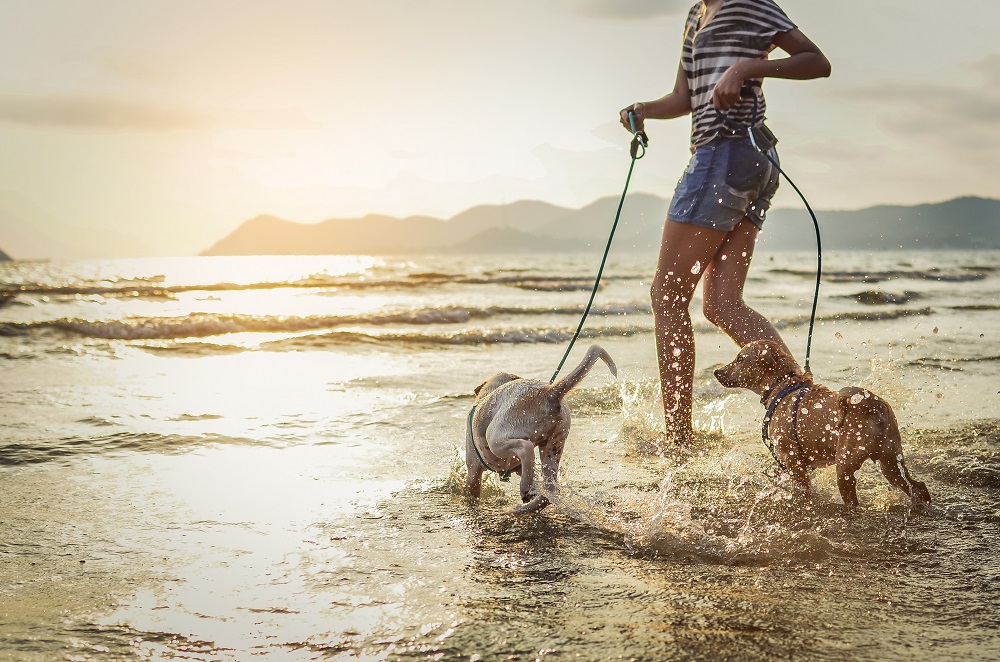
Picking the right material for your dog’s leash matters a lot. Nylon leashes are strong and work well in wet places. Leather gives a classic look but needs more care. Biothane is tough and fights off water, yet it costs more.
Cotton and rubber might not last as long but they have their uses, too. Think about your dog’s size, how they act, and what you guys like to do together. This helps choose the best leash.
Need help deciding? Our team loves to talk about finding the perfect fit for your furry friend. Reach out to Jessica@bestoneinc.com!
FAQs
1. What material makes the strongest dog leash?
Nylon is known for being a strong material for dog leashes.
2. Is there a dog leash that’s good for dogs who chew a lot?
Yes, metal chain leashes are great for dogs who tend to chew.
3. Can I find a dog leash that’s easy to clean?
Rubber or silicone leashes are super easy to clean with just water.
4. What kind of leash should I get for my small dog?
A lightweight fabric or leather leash works well for small dogs.
5. Are there eco-friendly options for dog leashes?
Yes, you can find leashes made from recycled materials. They can also be made from sustainable fibers like hemp.

